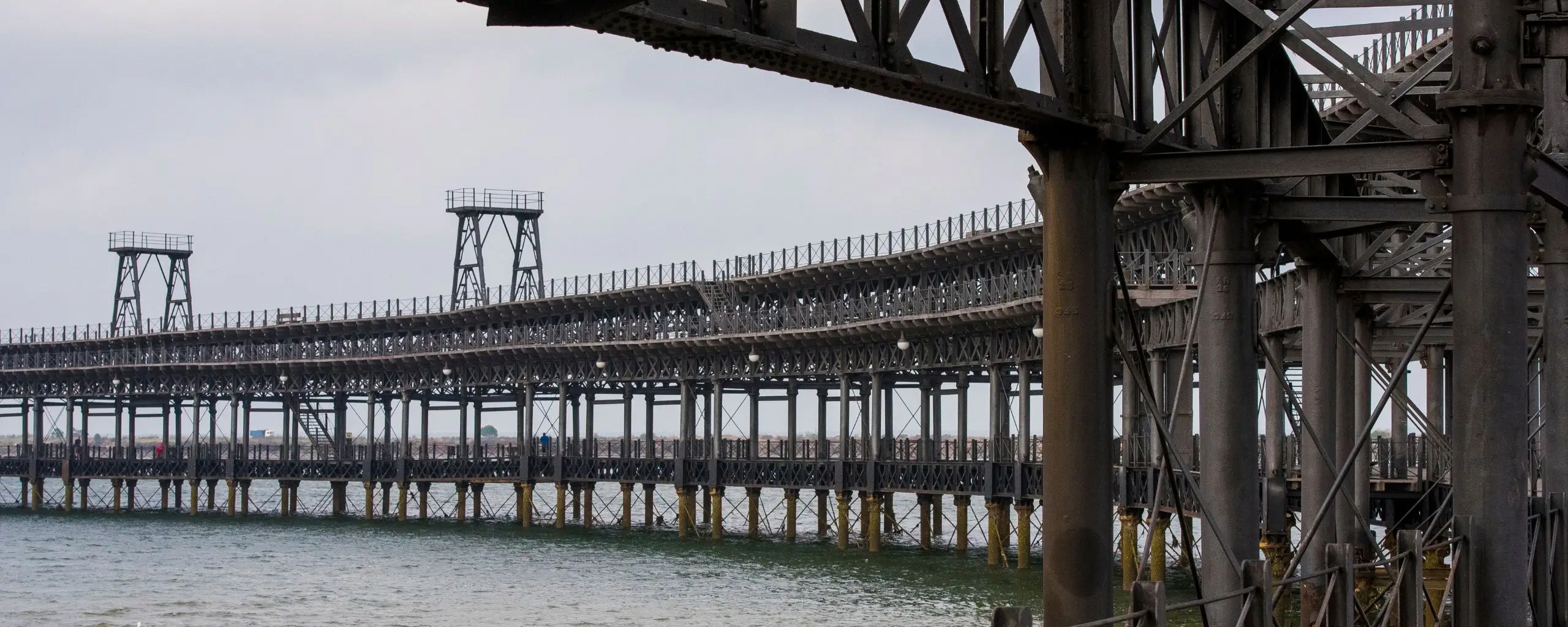The Rio Tinto Company Pier is one of the heritage landmarks of the city of Huelva. Since its construction in 1874 until its closure in 1975, with its one hundred years of history, it is a masterpiece of engineering of the last quarter of the nineteenth century. The mineral unloading pier, owned by the Rio Tinto Mining Company, was restored in 2007 for the use and enjoyment of the citizens. It has been declared an Asset of Cultural Interest.

With an enviable location, the Rio Tinto Company Pier overlooking the Natural Park of its marshes, allows us to enter the mouth of the Odiel River in a pleasant walk; in the evening, the sea breeze and the sunset in the Ría de Huelva, offers us a palette of mauve, lilac and golden colors unmatched.
It was a “gravity loading pier”. The gravity system consists of arranging different tracks for the entrance and exit of wagons, so that the entrance tracks are ascending up to a zenith from which they descend to the end of the pier. Finally, with a switch change, the wagons return by descending side tracks. As a result, unloading was done without any mechanical system since the wagons were driven by gravity.
“At a session of the Board of Directors of the Rio Tinto Company Limited meeting in London on March 31, 1873 under the chairmanship of Mr. Matheson, Sir George Barclay Bruce is engaged as railroad consultant and Mr. David Forbes as mining engineering consultant. It was built by the John Dixon Company on the left bank of the Odiel after the resignation, for lack of experience, of the Clark & Punchard Company. At the beginning of September 1874 the works began”.
Born in Newcastle in 1821. At the age of 21 he joined the Newcastle to Darlington and Northamptom to Peterboro railroads as a resident engineer. In 1850 he worked on the East Indian railroad in Calcutta and between 1853 and 1856 he was chief engineer of the Madras railway. His work spread throughout Germany, Russia and most of Europe, becoming a prestigious world expert in railroads. In Huelva, in 1873, he traveled with Matheson and designed the railway line, with bridges and tunnels, and the Rio Tinto Company’s pier. Rio Tinto.
He was born in Tarsdon, Northumberland in 1843. After finishing his studies he went to India to work on the Madras railway and the Madras Pier. He worked on the London piers and other British ports. He was resident engineer at the Reneough Bridge in Newcastle where he was met by Bruce who proposed him the direction of the work of the Rio Tinto Company Pier in Spain.
Puente Pt Muelle Levante, s/n, 21001 Huelva